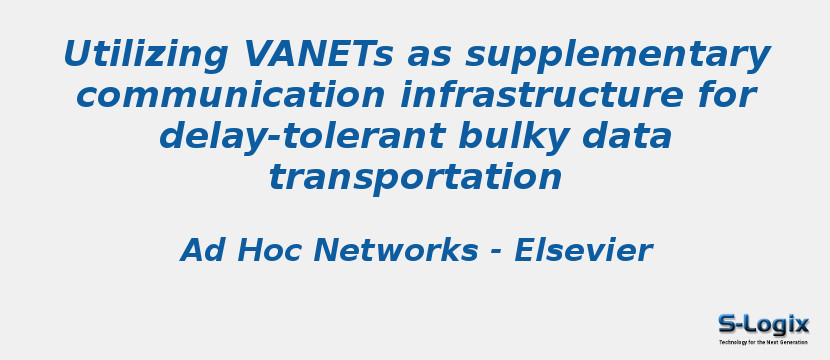Research Area: Vehicular Ad Hoc Networks
With the advancement of connected vehicles, high-bandwidth wireless technologies such as DSRC and WiFi are envisioned to be pervasively available on vehicles. Such empowered vehicles can form large-scale vehicular ad hoc networks (VANETs), which contain rich bandwidth and storage resources. Despite their critical importance for core safety-related VANET applications, these resources are underutilized in practice due to infrequent occurrence and limited size of safety-related messages. However, for a broad range of delay-tolerant applications, which run on edge networks and demand transmission of bulky data with hours or days of delay allowance, such underutilized bandwidth and storage resources in VANETs can be highly valuable. To efficiently utilize VANET resources for delay-tolerant bulky data transmission without compromising the performance of safety-related VANET applications, we propose a Delay-tolerant Data Transportation (DDT) scheme, which aims to use minimal VANET bandwidth to accomplish long-term data transportation under certain end-to-end delay requirements. Unlike traditional VANET data dissemination schemes which prefer data forwarding, DDT primarily relies on a more bandwidth-conserving data carrying method for data transportation. This unique feature makes our proposed system suitable to serve as a supplementary communication infrastructure for offloading and thus alleviating the data transmission workload on edge networks. Extensive simulations have been conducted using a customized simulator, and the results have demonstrated DDTs reliability and adaptability under various scenarios. Particularly, with moderate traffic density and delay requirements, the VANET bandwidth consumption of DDT is 27.3% lower than that of a naive scheme and 5.3% higher than that of a lower bound obtained from theoretical analysis, while the satisfaction ratio of delay requirements is as high as 0.965.
Keywords:
Author(s) Name: Hua Qin,Xiang Xiao,Weihong Chen,Ni Li,Min Zeng,Buwen Cao,Yang Peng
Journal name: Ad Hoc Networks
Conferrence name:
Publisher name: Elsevier B.V.
DOI: 10.1016/j.adhoc.2020.102394
Volume Information: Volume 112, 1 March 2021, 102394
